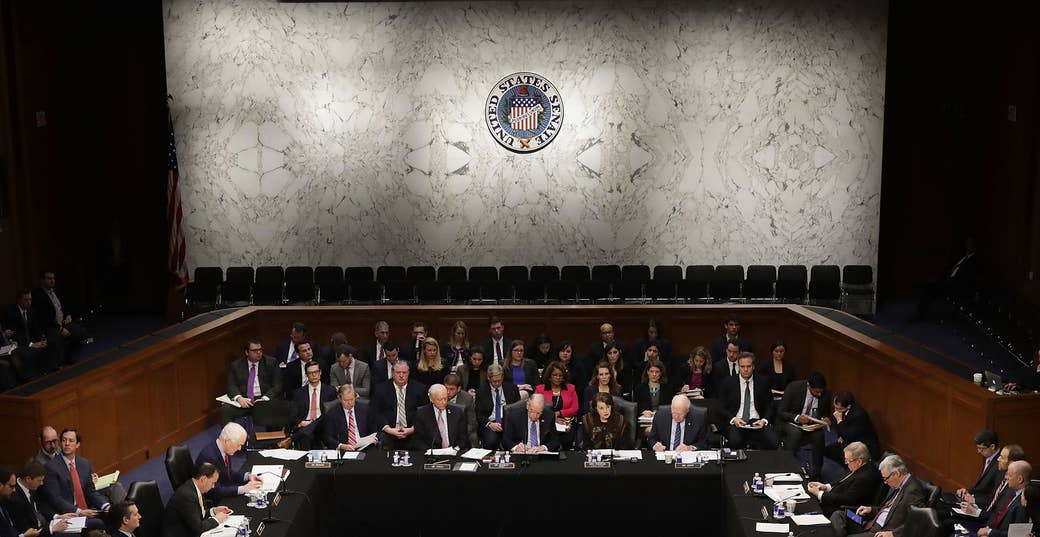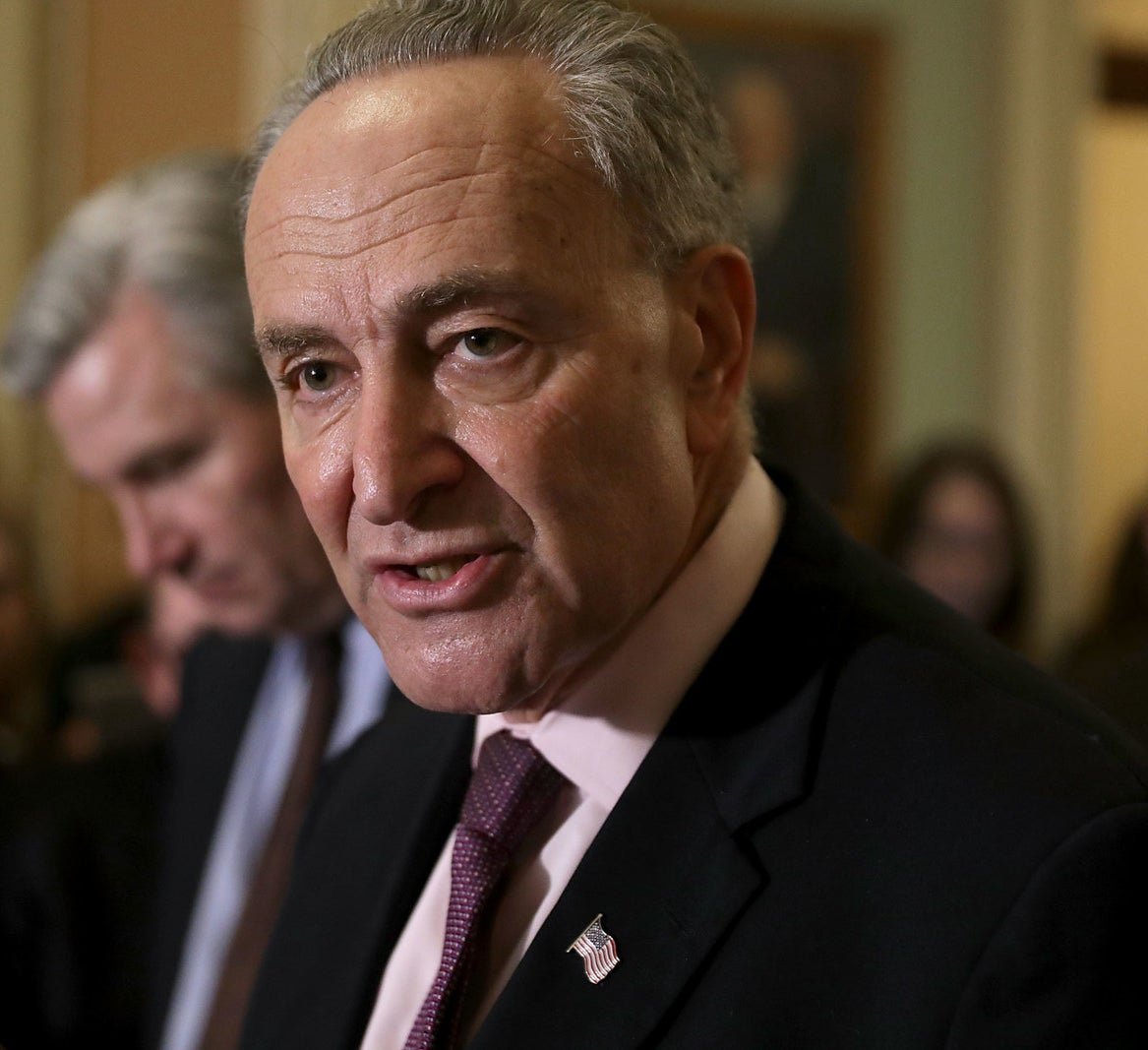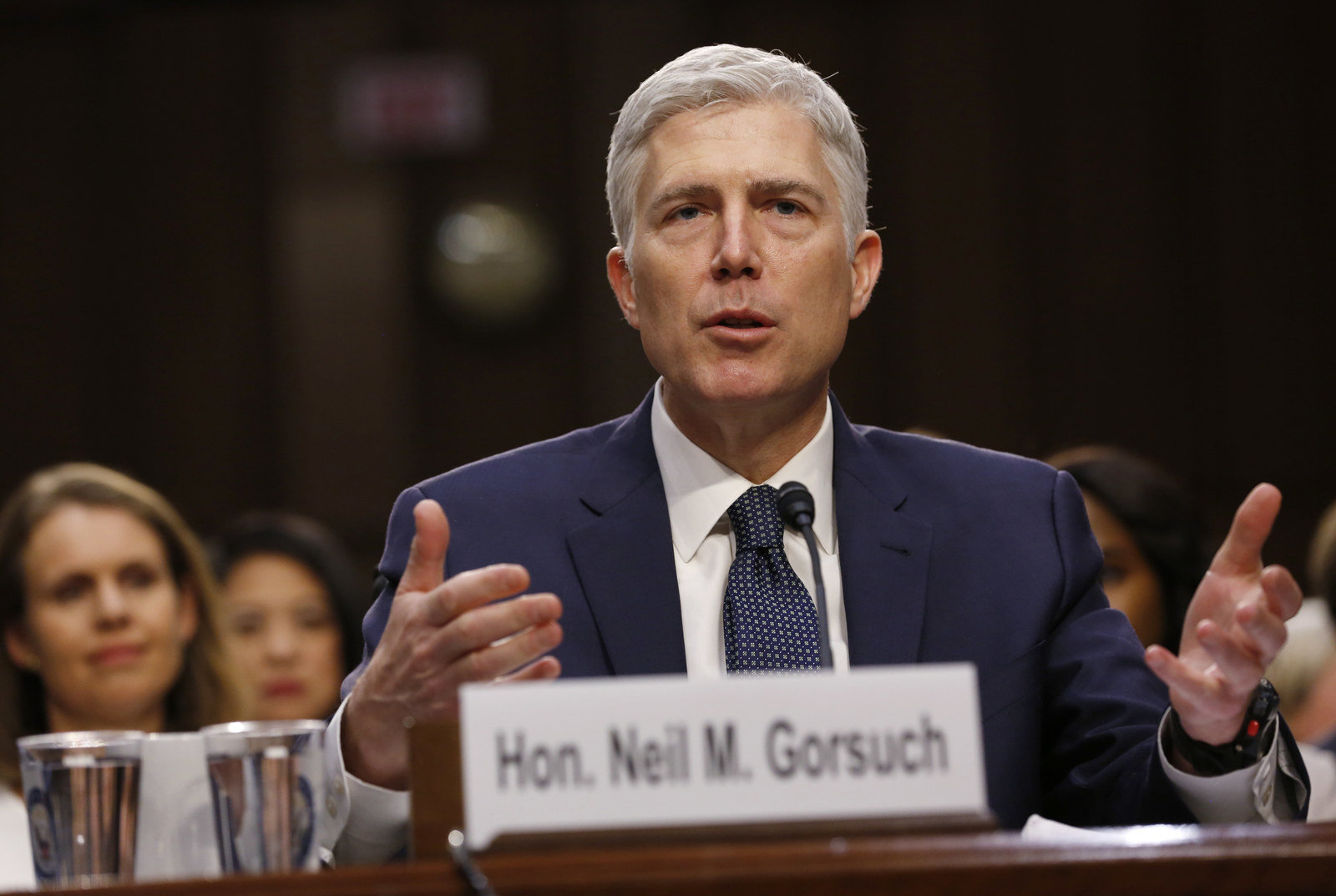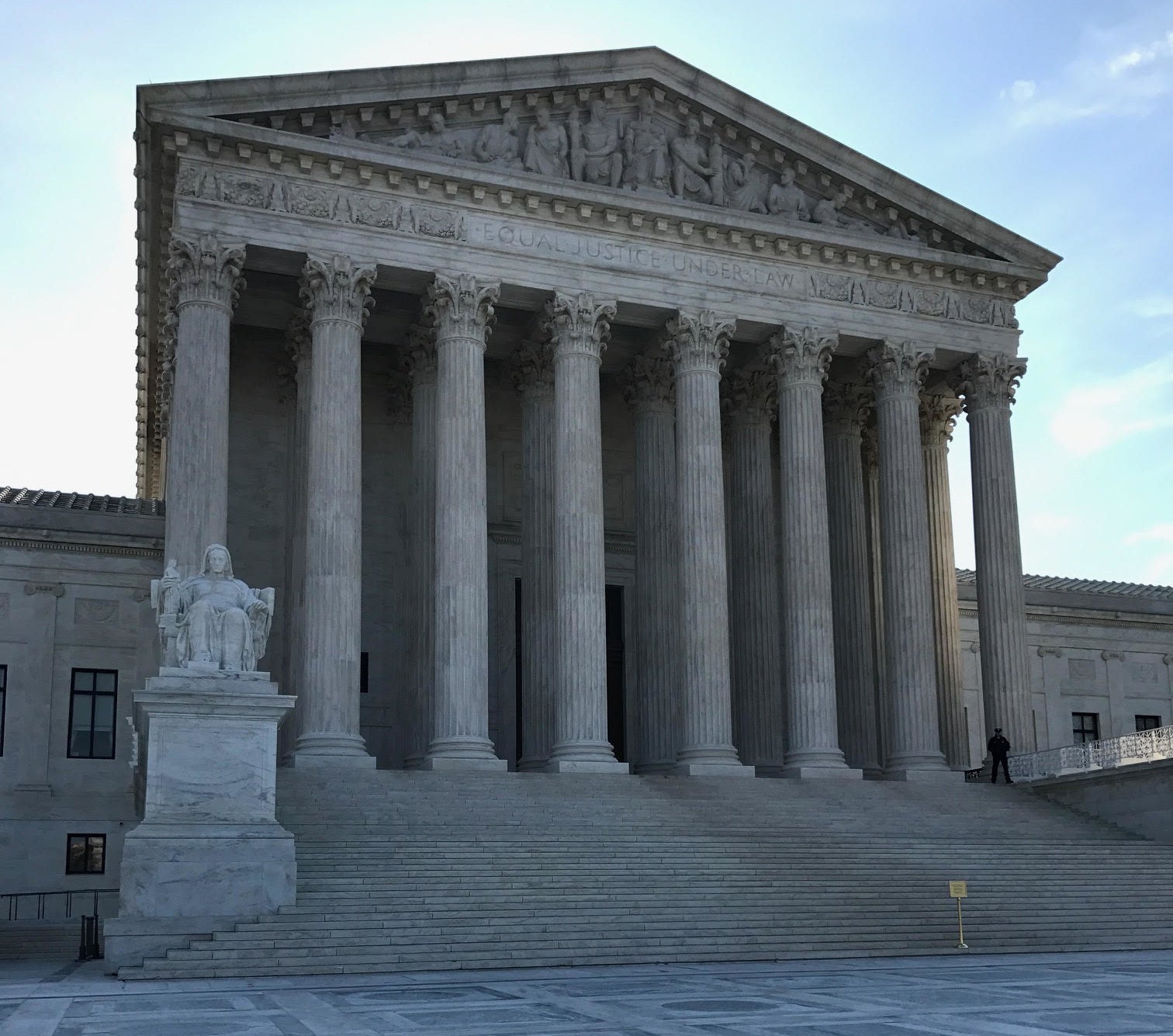
WASHINGTON — Over the next 48 hours, America is — likely — going to change.
Why is that?
The Senate is controlled, just barely, by Republicans, 52–48, but it ordinarily takes 60 votes to get things done. Because they can’t agree on things, however, the leader of the Senate is about to try to change the rules so the Republicans can get one Very Big Thing done.
What is that thing?
Confirming Neil Gorsuch to the Supreme Court.
Senate Majority Leader Mitch McConnell is an institutionalist and smart historian of the Senate, and he would be loathe to change Senate traditions unless he felt it was important. For McConnell, though, confirming a conservative Supreme Court justice — after having kept a vacancy open for President Trump to be able to nominate Gorsuch in the first place — is one of the most of important roles he and the Senate can play.
So, here we are.
The rule change, often called the "nuclear option," will — if the Republicans are successful — seriously shift how America picks judges to sit on the highest court in the land. It will change the Senate, it will change Neil Gorsuch’s life, it will change the current Supreme Court — and resolve some hotly contested national legal issues — and it could change the Supreme Court as an institution.
Nine Justices

Over the past nearly 14 months, since Justice Antonin Scalia died, the Supreme Court has functioned with eight justices.
In all of that time, the conservative justices have only managed to secure a win in a closely divided case one time. The case — Utah v. Strieff — was about the effects of unconstitutional police stops and it was heard on the first day the justices held arguments after Scalia’s death. The decision, making it easier for police to get evidence admitted after an unconstitutional stop, was the only 5–3 split of the court during this time in which the conservatives — joined in the majority by Justice Stephen Breyer — took the upper-hand.
The opposite, the four liberal justices winning over one or more conservatives, happened with more or less frequency over the past year — in abortion, affirmative action, judicial recusal, and death penalty cases. And, of course, many cases were unanimous or nearly unanimous — or presented non-ideological lineups.
When conservatives couldn’t manage to win over any of the liberal justices and liberals couldn’t secure Justice Anthony Kennedy or any other justices’ votes, however, the court was split 4–4. Such decisions affirm the lower court but do not set precedent.
If Gorsuch is confirmed to the Supreme Court this week, those cases could come back and — if he votes with the conservatives as expected — the conservatives could secure more 5–4 wins.
Among those cases was one particularly high-profile case about the rights of public unions to be free to collect fees from nonunion members, called “agency fees.” In the arguments over Friedrichs v. California Teachers Association, the court appeared to be tilted 5–4 against the unions. Scalia died before the opinion was released, however, and the court handed down a 4–4 decision — which left an opinion siding with the unions in place. With Gorsuch on the bench, a similar case could find its way to the Supreme Court, inviting the court to reach the decision conservatives sought in Friedrichs to limit the power of public unions dramatically.

Among other 4-4 cases from the past year were some that won’t come back to the court now — like the challenge to Obama’s executive order creating the Deferred Action for Parents of Americans and Lawful Permanent Residents (DAPA) program in US v. Texas. However, questions about the effect of the related Deferred Action for Childhood Arrivals (DACA) program could still reach the justices, given that Trump has, thus far, kept that program in place. A 4–4 split in the US v. Texas case could signal a similar split on questions about the effects of DACA.
There also are pending cases, which Gorsuch could begin hearing once he is sworn if he is confirmed. Most notably, those include a case out of Missouri about whether excluding a church from participating in a specific type of governmental program can violate the Constitution's Free Exercise Clause. Gorsuch, known for his strong defense of religious liberty in the Hobby Lobby and Little Sisters of the Poor cases about the contraception mandate in the Affordable Care Act, will be watched closely for how he handles the Trinity Lutheran Church of Columbia v. Comer case should he join the Supreme Court and join the arguments on April 19.
Additionally, Gorsuch becoming the ninth justice on the court likely will mean Justice Anthony Kennedy will return to his place as the so-called “swing vote” on the court — the justice in the ideological center of the nine justices and, therefore, the one whose vote can control the outcome in close cases. This, of course, has been most notable in cases over abortion rights, LGBT rights, and affirmative action.
If Gorsuch ends up on the high court and voting to Kennedy’s left on any of those issues, he would be the swing vote — but also a surprise to pretty much everyone, including the conservative groups and donors who have put millions into securing his confirmation.
A Changed Senate

But all of that gets a bit ahead of where things stand now. What still needs to happen for Gorsuch to get there?
On Tuesday, McConnell filed cloture on Gorsuch’s nomination. The cloture petition will ~ripen~ by Thursday morning and McConnell can then seek to invoke cloture. (This is Fancy Senate Talk for: seek 60 votes to end debate on the nomination.)

More than 40 Democrats have backed Minority Leader Chuck Schumer's call to vote against cloture — meaning they will succeed in what McConnell and Judiciary Committee Chair Chuck Grassley call the “first partisan filibuster” of a Supreme Court nominee. (Of course, Democratic Sen. Chris Coons shot back earlier this week that Grassley’s decision not even to hold hearings for President Obama’s nominee for the seat, Merrick Garland, constituted the “longest partisan filibuster on this committee.”)
If and when cloture fails, McConnell is likely to embark on a course to change the rules so that, for purposes of Supreme Court nominees, cloture is successful — meaning, debate can be ended and a final vote can be held — with a simple majority vote of the Senate. This is the path that the Democrats took for lower court and executive branch nominations when Obama was president and Democrats controlled the Senate with less than 60 votes in 2013.
Now, McConnell and the Senate Republicans will be seeking to extend that to Supreme Court nominations, including the pending nomination of Neil Gorsuch.
For more about all of this, see this BuzzFeed News report on "Why Republicans Are Confident Neil Gorsuch Will Be On The Supreme Court."
Assuming McConnell succeeds — he can’t lose more than two Republicans on the vote to change the rules — Gorsuch’s nomination will proceed to a vote, he will be confirmed, and he will join the Supreme Court.
He will, however, leave the Senate a changed place.
The rule change itself marks the apex of a years-long political battle over the direction and composition of the highest court in the United States and an increasingly partisan divide over the nominations to the court. With the change in place, it will mean that when presidents have the Senate majority on their side, they will no longer need bipartisan support to have their Supreme Court nominees confirmed.
In part, this means the Senate — referred to in Important Congressional Texts (and originally, it is said, by George Washington) as the "saucer" that allows for the cooling of the passions of the House — could become even less of a moderating institution.
"I regret it for the country because I think you're going to have more ideological judicial picks," Republican Sen. Lindsey Graham told BuzzFeed News on Monday. "And I think the Senate's going to become more polarized."
Justice Gorsuch

If the rule change is successful, Neil Gorsuch will be confirmed as the 113th justice of the Supreme Court by the end of the week.
A little more than a decade ago, Gorsuch was a young, partisan lawyer working in the Justice Department under President George W. Bush, making recommendations regarding national security questions that have continued to vex the nation in the years since. Then, Bush nominated him to a seat on the US Court of Appeals for the 10th Circuit in 2006, he was confirmed without opposition, and he took to the bench.
In a decade on the appeals court, Gorsuch established himself as a prominent conservative — well thought of among the groups that ended up in the unprecedented position of helping a presidential candidate put together a list of possible Supreme Court nominees that he publicized as part of his campaign for office.
Now, the result of an unhalting opposition to consideration of Obama’s nominee, Trump’s unexpected election victory, and a remarkably successful nomination process, Gorsuch is on the precipice of a lifetime appointment to the highest court in the country.
A Changed Court

The larger picture for the Supreme Court following the coming Senate votes is not only about Gorsuch, though. It’s also about what this means for what happens down the road.
Gorsuch replacing Scalia might have result in some differences around the edges — or in the styles of opinions — but Gorsuch (again, absent a surprise) is expected to play a similar ideological role on the court to Scalia.
With the filibuster gone for future Supreme Court nominations, however, the next nomination — and the nominations to come after that — might look very different.
If Supreme Court nominees can be approved with a simple majority vote, expect less centrist nominees from presidents when their party also controls the Senate — even by one or two votes. That, in turn, could over time change the way the Supreme Court sees itself.
If more conservative and, in a different presidency, liberal justices end up joining the court, it could become an even more explicitly political body. Expect a lot of hand-wringing over this possibility if the rule change is successful.
At the same time, however, a single justice is only one of nine votes. A justice’s ideas, in order to change the way the law is interpreted in the country, must be persuasive enough to win over at least four of his or her colleagues in order to forge a majority opinion.
While compromise nominees might be necessary when the opposing party controls the Senate, candidates with solid legal credentials who might have been considered “outside the mainstream” in the prior-to-the-nuclear-option world might now have a shot on the bench in the absence of a 60-vote rule. (Ask Miguel Estrada and Goodwin Liu, lower court nominees from the George W. Bush and Obama administrations, respectively, whose nominations failed on a cloture vote.)
This is all speculation, of course. The long-term effects of the change, if it happens, can’t be known now — and won’t be for some time.
For now, though, the next two days will be days to watch what’s going on in the Senate for its effects on the Senate, the Supreme Court, Neil Gorsuch’s nomination — and the country.

